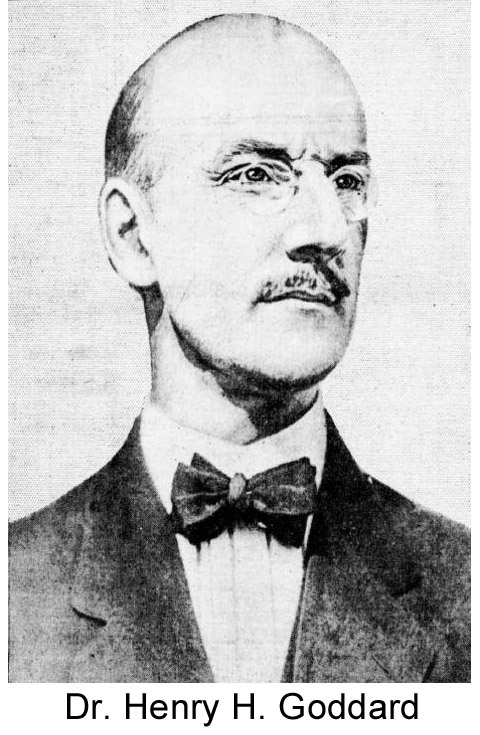American Eugenics
 (1918) Pennhurst was built as a world apart from the rest of society both to keep the 'feeble minded' from the public but also to end
the intermixing of their genes with the population. A concern about the reproduction of the 'feeble minded' also was reflected
in the desire to keep the sexes separated even on the Pennhurst campus by means of building a separate female campus. These
ideas were part and parcel of the then-popular ideas of eugenics.
(1918) Pennhurst was built as a world apart from the rest of society both to keep the 'feeble minded' from the public but also to end
the intermixing of their genes with the population. A concern about the reproduction of the 'feeble minded' also was reflected
in the desire to keep the sexes separated even on the Pennhurst campus by means of building a separate female campus. These
ideas were part and parcel of the then-popular ideas of eugenics.
In the Biennial Report to the Legislature submitted by the Board of Trustees, Pennhurst's Chief Physician quotes Dr. Henry
H. Goddard, a leading eugenicist, as follows: "Every feeble-minded person is a potential criminal." The quote is used to support
the argument for an expansion of the institution. The report goes on to say, "The general public, although more convinced today
than ever before that it is a good thing to segregate the idiot or the distinct imbecile, they have not as yet been convinced as
to the proper treatment of the defective delinquent, which is the brighter and more dangerous individual. It is now generally
understood that feeble-mindedness is in the great majority of instances the direct result of hereditary transmission of mental defect.
It is also known that the feeble-minded female is very likely to bear children and that these children are almost certain to be
defective or in some way permanently dependent. The feeble-minded girl is more of a menace to society than the feeble-minded boy.
Statistics show that feeble-minded girls and boys marry in the ratio of three to one. It would seem, therefore, that if the State
is not adequately equipped to care for all of the feeble-minded, the feeble-minded girl should have institutional care in preference
to the boy, since she is the greater menace."
The eugenics movement was short-lived in the United States. Discredited in no small part by the horrific eugenically-driven experiments
and programs of the Nazi regime, the movement was shown to be scientifically baseless and racially biased.